For Americans, every major election seems to come with folks fromeither sidesaying that they are going to move, either out of state or, in extreme cases, to another country if their side doesn’t win. More often than not, this is all talk, but a few people have actually done it.
A woman went viral onTikTokafter posting a video comparing her previous life in a red state after moving to a blue state.We reached out to her via email and will update the article when she gets back to us.More info:TikTok
RELATED:
Americans tend to refer to different states as “red” or “blue” based on how the majority of its inhabitants vote

Image credits:Courtney Hedger / unsplash (not the actual photo)
One woman shared the differences she discovered after moving to a blue state
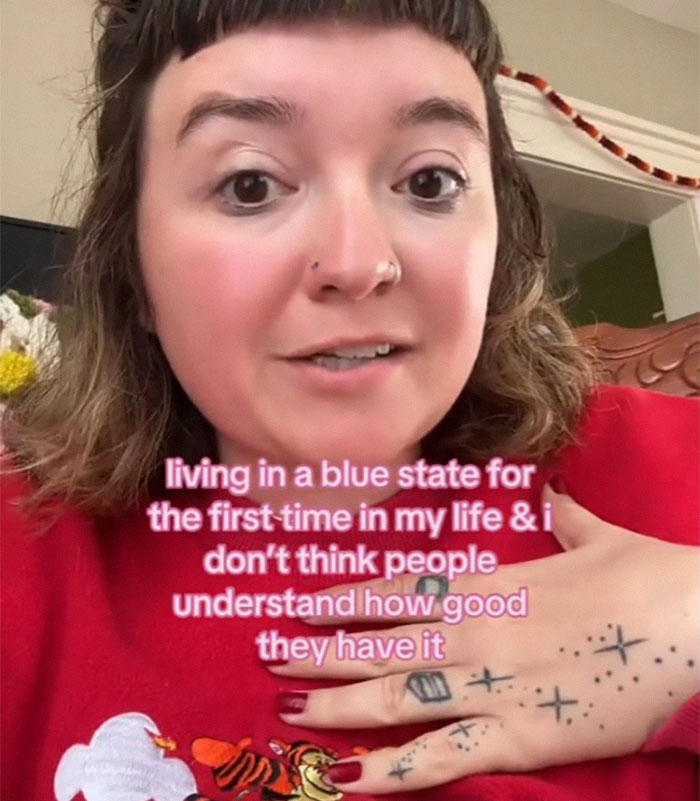
Image credits:officialnancydrew
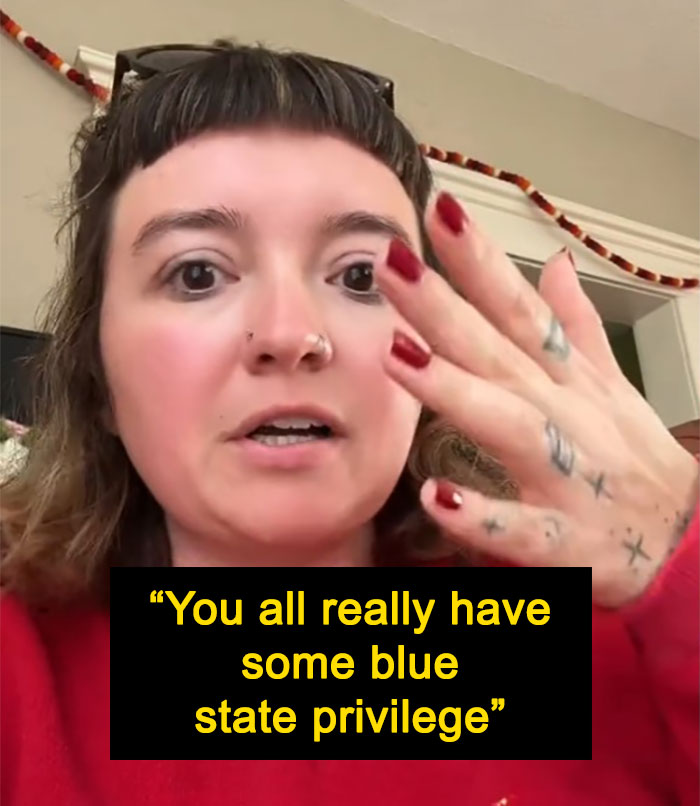
You all really have some blue state privilege, because I live in Minnesota. I feel like I live in, like, communist Cuba right now. Because I’ve only lived in red states.
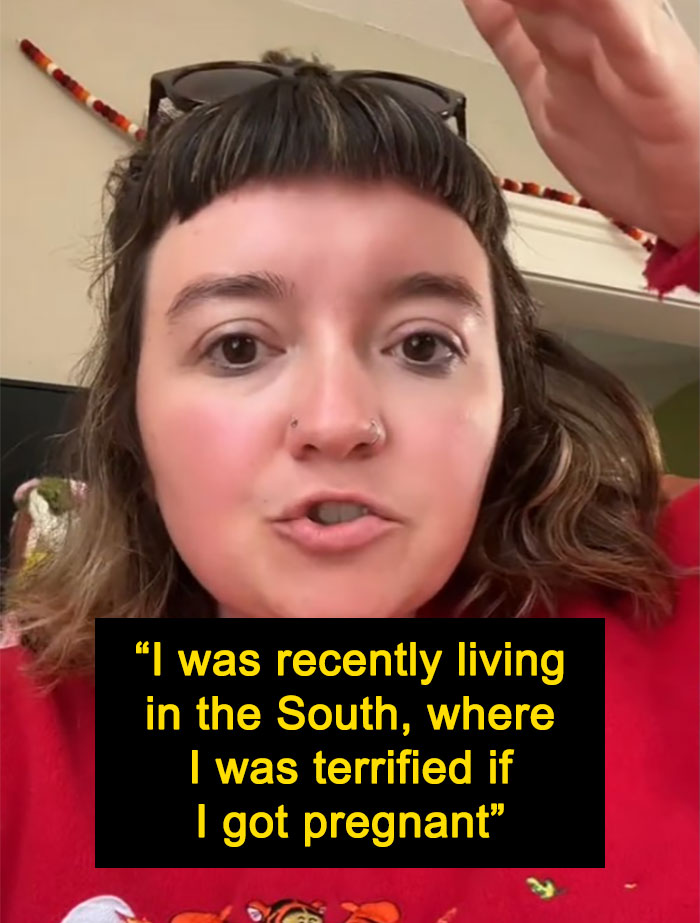
I was recently living in the South, where I was terrified if I got pregnant again because I had a high-risk pregnancy. Also, my husband couldn’t get a ‘snippy snippy’ done cause it wasn’t on his insurance. Because they don’t play that way.

Image credits:aljazeera
And people here will be like, if you go to the rural area, it’s so conservative. If you go to the suburbs, it’s so conservative. No, it’s not. Not compared to the rest of the [freaking] country.
They’ll be like, ‘oh, but there are Trump signs out there’. There are like twelve. There are like twelve. Have you ever driven in a rural area in a red state? Have you ever been to Texas, y’all? And I’m not trying to sound better cause I lived in Texas, but it was scary.

And people do not understand the meaning of actually being in a place with a bunch of scary a** people. Because you would be driving around rural areas and you would see signs that are far worse than Trump signs. Far worse. And these people would like, ‘pew pew’ you. Like, they… they will.

Image credits:tabitha turner / unsplash (not the actual photo)
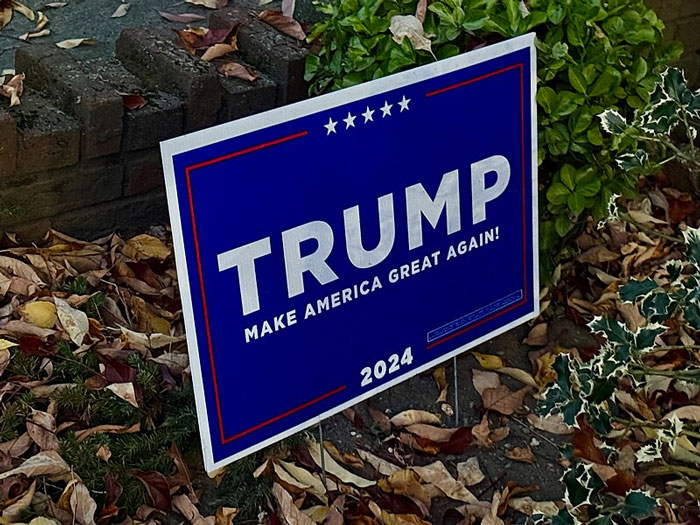
Image credits:Oleg Yunakov / wikimedia (not the actual photo)
Like, everybody’s nice here. It’s crazy, and people don’t get it. Oh, my God, I think- you know what I think? And this is crazy. You need to live in a red state for a while because you need to understand how the rest of the country lives.
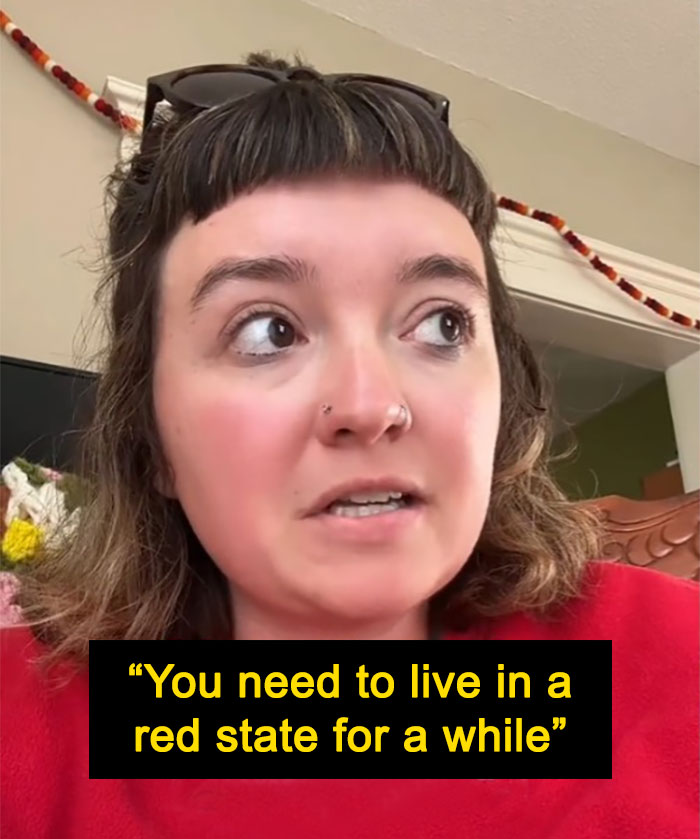
You can find the full video here
Humans love simple categorizations
It’s very common to reduce complex questions of economy, voting and living standards into truisms, because people like simple answers, particularly ones that confirm what they already believe. The common stereotype is that “blue” (Democrat leaning) states tend to have a higher quality of life than “red” states (Republican leaning.) However, every place has its own unique local “features” that potential new residents need to keep in mind because the grass isn’t always greener.
For non-Americans who might be unfamiliar with US politics, there are actually more than two parties in theory, but in practice, it’s always the same two. This is one reason it’s actually possible to even refer to states with millions of inhabitants as just “red” or “blue.” While in broad strokes, it might be hard to compare one place to another, it’s also worth noting that, for this woman, the specific topic of abortion is something she needs to be in a blue state for.
So to discuss specific things, it’s important to turn to statistics, which do not paint a pretty picture. Of thetop tenstates in economic opportunity, infrastructure and education, the majority are “blue” states, although there are notable exceptions, for example, Florida and Utah, both as different from each other as can be.
In a country as large as the United States, it’s hard to make sweeping generalizations
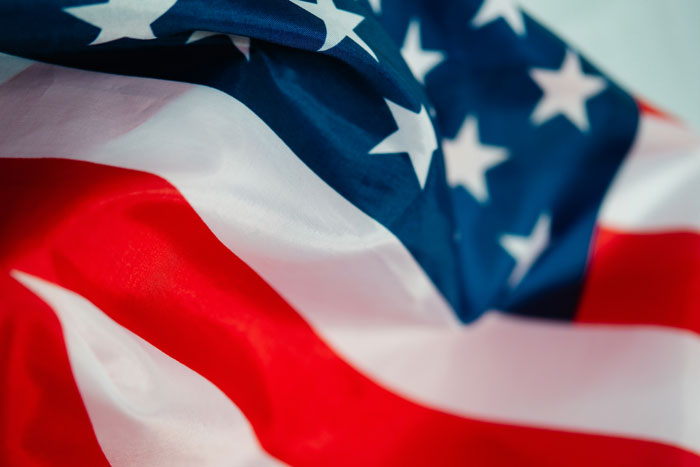
Image credits:Wesley Tingey / Unsplash (not the actual photo)
If health is important for you, then red states are also not the best option. Thebottom four, Alabama, Mississippi, Tennessee and Wyoming are all very red. Even the “best” red state, Utah, is still only number 14 in the entire union. Of course, in the United States, healthcare is generally something you pay for yourself, so it’s possible to argue that economic policies can offset issues with a state’s overall health outlook.
Here, it’s more of a mixed bag. When measuring affordability andeconomic opportunity, Vermont and Maine rank first and second. These are both Democrat-leaning states. However, the remaining states in the “top 10” are red, Indiana, Iowa, Kansas, Montana, North Dakota and Wyoming. It’s important to note that affordability and economic opportunity do not necessarily reflect the actual size of an economy, as California (blue), Texas (red) and New York (blue) tend to dominate on sheer size.
Netizens shared their thoughts and experiences






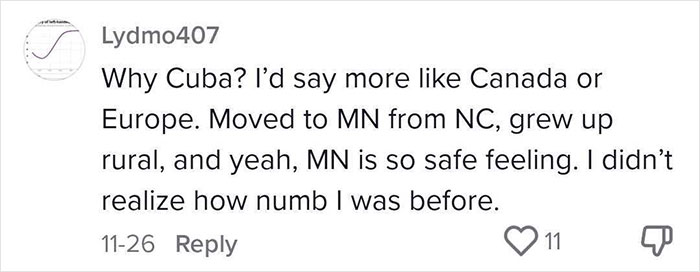





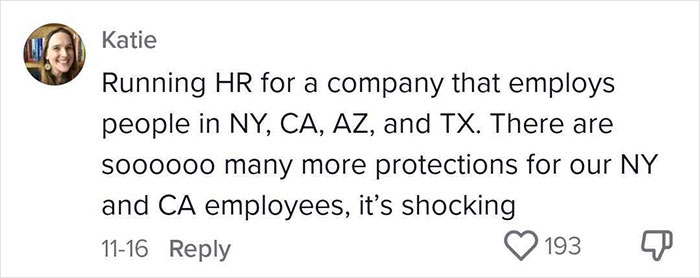
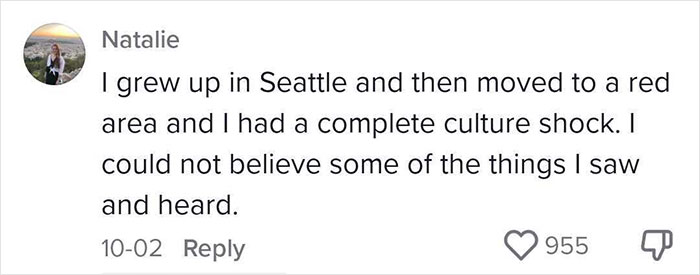

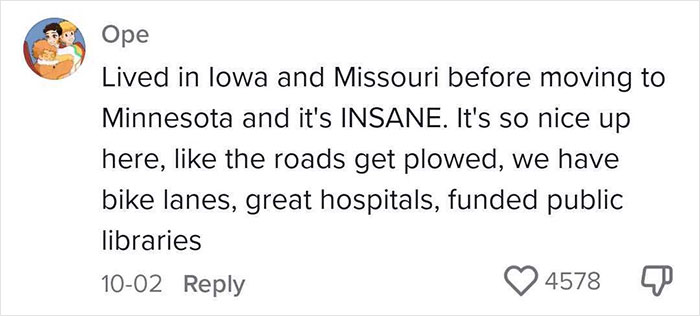
She later made some more videos on this topic
Thanks! Check out the results:
Curiosities